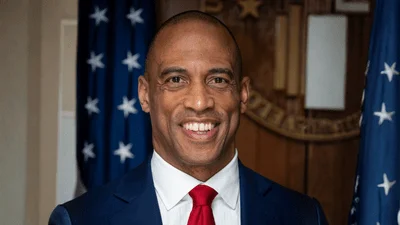President Donald Trump has charged the secretaries of labor, commerce, and education with a bold directive: to deliver a comprehensive plan to expand registered apprenticeships and overhaul outdated federal workforce programs. But success in either effort alone is not enough. To truly meet the demands of tomorrow’s economy, both initiatives must move forward in tandem. Failure to advance one will inevitably undermine the other.
The executive order on “Preparing Americans for High-Paying Skilled Trades Jobs of the Future” marks a decisive step toward expanding registered apprenticeships (those regulated by government agencies) across a broad range of industries. For construction, with a staggering shortage of 439,000 workers this year alone, the need to scale all proven workforce pipelines is critical.
Registered apprenticeships in the construction industry are a time-honored tradition, and for good reason. As a proven earn-while-you-learn model, it allows participants to build skills, gain experience and often graduate debt-free. In fact, completers can be as much as $200,000 ahead of their college-educated peers in lifetime earnings early in their careers.
However, according to estimates from Associated Builders and Contractors, there are about 290,000 construction apprentices in government-registered apprenticeship programs, or GRAPS, with only about 40,000 completing their programs annually. With 439,000 workers needed in 2025, this output falls far short of industry demand.
Clearly, relying on a single workforce development pathway is not enough. That’s why we need an all-of-the-above approach to build a robust, skilled construction workforce.
GRAPs are a valuable workforce development tool, but they alone cannot meet the demand (at least as it’s currently structured). GRAPs, too, are not the only proven model for effective on-the-job learning.
Modernizing our federal workforce development system requires rethinking how GRAPs are structured and delivered, starting with making GRAPs truly portable. These programs are registered with either a State Apprenticeship Agency or through the U.S. Department of Labor. Despite federal standards, some states refuse to recognize DOL-registered apprentices for state purposes. Likewise, they may not recognize registered apprentices from another state. This hampers the mobility of the apprentices and the contractors that employ them. Any apprenticeship program that meets federal registration requirements should be recognized nationwide.
Persistent labor shortages have forced contractors to overhaul their recruitment, training and retention strategies. Today’s construction workforce must be agile, tech-savvy and prepared to meet increasingly specialized client and project requirements. As a result, contractors are investing in modern craft training programs that emphasize rapid upskilling and targeted, project-specific instruction.
Unlike the traditional, generalized approach of many GRAPs, these contemporary training models are often designed to meet precise performance expectations, such as advanced equipment operation, green building certifications or compliance with unique manufacturer or safety protocols. Clients are demanding higher-quality, better-documented outcomes, and contractors need the ability to prepare their teams accordingly, sometimes within days or weeks, not years.
To keep pace with these demands, federal workforce policy must evolve to support multiple training pathways, enable industry-driven customization and promote innovation in curriculum delivery. This one-size-fits-all model no longer serves the needs of workers, employers or the economy at large.
Nonunion construction industry leaders are working hard and innovating to recruit, educate and upskill the nation’s future construction workforce and building a vast network of apprenticeship, craft, safety and management education programs that work side by side with government-registered apprenticeship programs, across multiple occupations.
Expanding apprenticeship pathways creates more flexible, competency-based and market-driven education methods. This not only cultivates long-term skill sets and brighter futures for workers and their families but also accomplishes the Trump administration’s bold goals.
Greg Sizemore is the vice president of health, safety, environment and workforce development for Associated Builders and Contractors.









